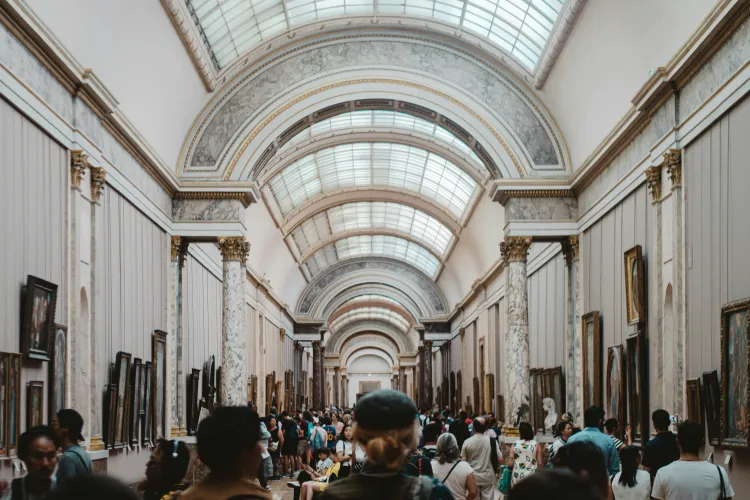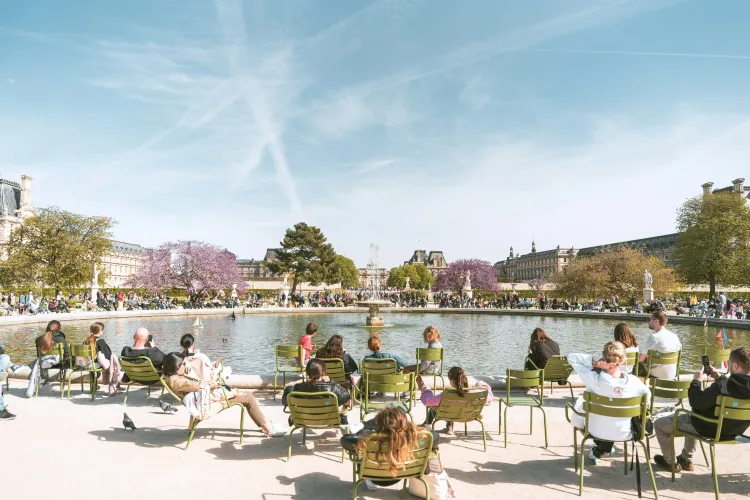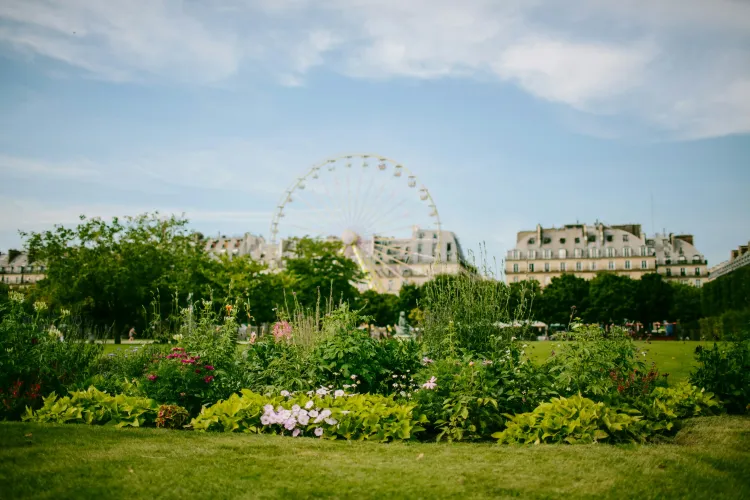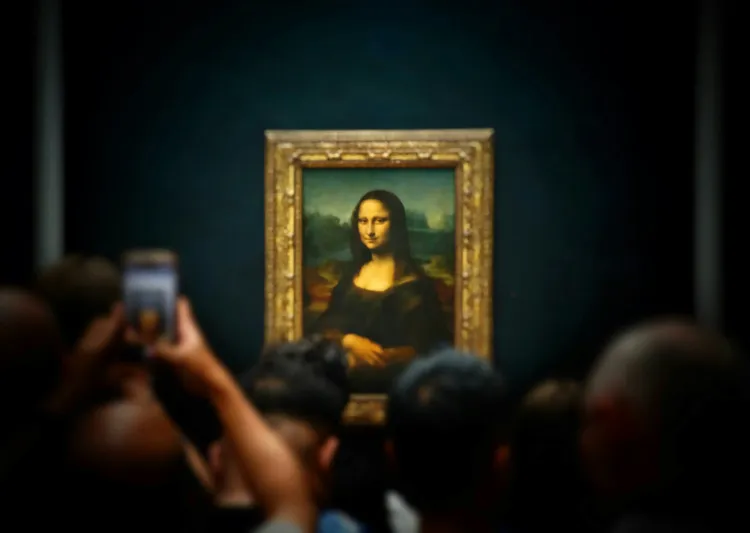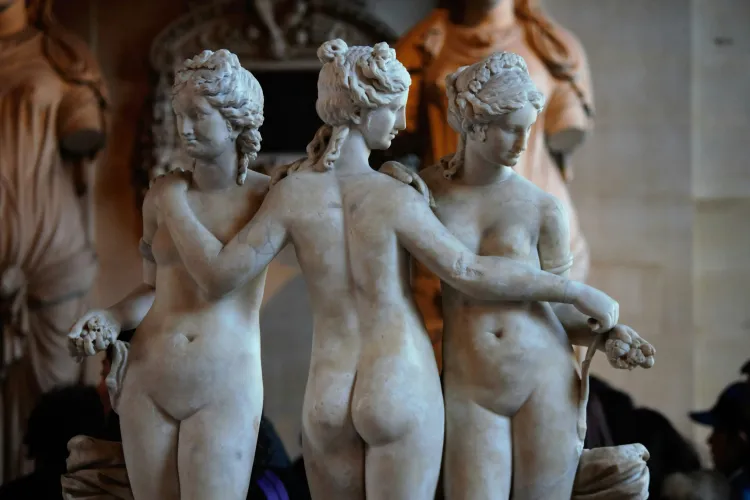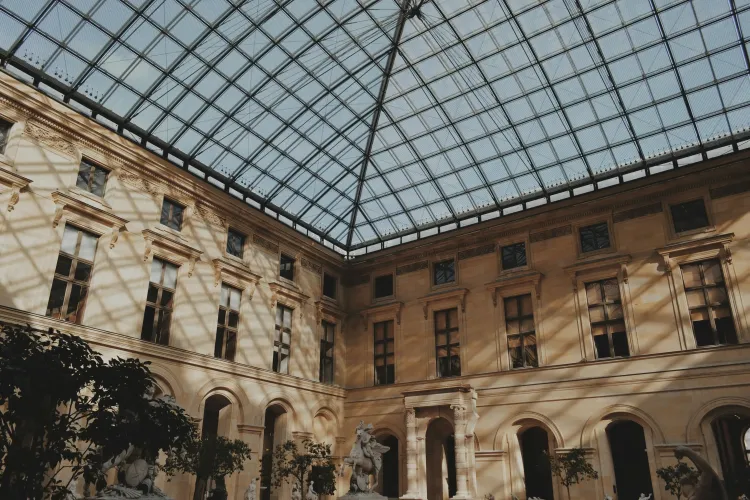The Louvre is not only home to breathtaking paintings and masterpieces of art, but it also houses some of the most iconic sculptures in the world. As an art gallery in Paris, the Louvre is unmatched, offering works carved from marble, bronze, and stone that stir deep emotions and bring visitors closer to the essence of human experience. Whether depicting tragic moments, heroic figures, or moments of sublime beauty, these sculptures transcend time and captivate millions each year.
Let’s explore 10 of the best sculptures at the Louvre in Paris, France, that will evoke emotion and even bring you to catharsis.
1. The Winged Victory of Samothrace (Nike of Samothrace) This masterpiece is one of the Louvre’s most famous works and is often cited in France Louvre Museum facts. The dramatic movement of Nike, the Greek goddess of victory, as she stands triumphantly on the prow of a ship, embodies both the grace and the power of victory. The sculpture’s sense of motion, despite being carved from marble, creates a sense of overwhelming emotion. It’s hard not to be moved by the sheer presence of this figure, exuding strength, freedom, and victory over adversity.
2. Venus de Milo One of the most famous statues in the world, the Venus de Milo captures the timeless beauty and mystery of the Greek goddess Aphrodite. While her arms are lost to history, her enigmatic expression remains one of the most discussed Louvre facts. The sense of serene beauty emanating from this figure evokes an emotional response, representing the ideal of beauty and the subtle melancholy of imperfection. The Venus de Milo is not just about physical beauty—it’s about the divine within us all.
3. The Dying Slave by Michelangelo Michelangelo’s Dying Slave is a powerful expression of human suffering and surrender. The marble statue depicts a man in the final moments of life, his body contorted in an agonizing pose. Michelangelo captures both the physical and emotional intensity of death, and the result is a deeply moving piece. The tension in the body, the vulnerability in the face, and the lifelike details convey the pain and tragedy of mortality.
4. Psyche Revived by Cupid’s Kiss by Antonio Canova This beautifully sculpted marble piece by Antonio Canova depicts the moment when Cupid revives Psyche with a kiss. The tenderness and grace of the two figures, as well as the emotional depth of the scene, create a sense of romantic transcendence. The softness of the marble and the way Canova brings the figures to life in such a delicate embrace makes this sculpture one of the most moving representations of love and redemption in classical art.
5. The Seated Scribe The Seated Scribe, an ancient Egyptian sculpture, exudes a sense of quiet dignity and contemplation. The figure, carved in limestone, represents a scribe, an essential figure in Egyptian society, sitting in a moment of stillness. The detail in his face, the subtle tension in his posture, and the dignified calmness of the figure all evoke emotions of wisdom, introspection, and a deep sense of the weight of time.
6. The Lacemaker by Jean-Baptiste Carpeaux While known for his emotional intensity in larger works, Jean-Baptiste Carpeaux’s The Lacemaker shows a more intimate side of sculpture. The figure of a woman focused on her craft, with delicate fingers weaving lace, conveys a sense of quiet concentration, beauty, and labor. There’s a tender simplicity to the piece, which, coupled with Carpeaux’s expert handling of marble, creates an emotional connection to everyday life and human perseverance.
7. The Corinthian Maid by Jean-Baptiste Carpeaux This statue, which depicts a young woman in the throes of a dramatic moment, captures the emotional tension of Greek mythology. The figure of the Corinthian maid, who is about to face an uncertain fate, conveys a sense of vulnerability, strength, and anticipation. The exquisite detailing of her body and the movement in her pose evoke emotions of helplessness and hope, allowing the viewer to feel the weight of the moment.
8. The Slave by Jean-Baptiste Carpeaux Another powerful work by Carpeaux, The Slave captures the agony and resilience of a figure trapped in chains. The figure, a muscular man in the midst of an intense struggle, seems on the verge of breaking free, but the torment is palpable. The emotional intensity of this piece, combined with its dynamic, almost violent movement, creates a raw depiction of human suffering and the desire for freedom. The viewer is compelled to feel empathy and anguish as they contemplate the figure’s pain.
9. The Standing Harpist (Egyptian) This ancient Egyptian statue, one of the most poignant in the Louvre, represents a woman standing with her harp, ready to play. Her serene posture and the graceful handling of the harp evoke emotions of tranquility and joy. Despite the formality of Egyptian art, there is an underlying softness and grace to this figure that speaks to the harmony between art and life, leaving an emotional impact on those who view it.
10. The Horse and Rider (Ancient Greek) This classic Greek statue, depicting a horse and its rider in motion, is a testament to the precision and emotion that Greek artists could imbue into stone. The moment captured in this sculpture conveys not only the beauty of human and animal unity but also a sense of action and grace. The figure’s vitality, frozen in time, transports the viewer into the drama of the scene, leaving them with a feeling of exhilaration and admiration for the artist’s skill.
These 10 sculptures at the Louvre are not just masterpieces—they are emotional journeys into the human experience, each piece telling a story of life, love, suffering, and triumph. Whether capturing the agony of death, the beauty of love, or the quiet dignity of everyday life, these statues evoke deep emotions that stay with you long after you leave the museum.
Bonus Tip: Make sure your visit is smooth and stress-free by booking your Kiwitaxi transfer to and from the Louvre. Enjoy comfort and convenience while immersing yourself in the beauty of these incredible works of art!

